
LIVED ARCHITECTURE: FUTURE HERITAGE
We stand at the dawn of an African century,
a century where Africa will take its rightful place among the nations of the world
Nelson Mandela (1918-2013)
Equatorial Guinea has entered the 21st century amid vital social and economic transformations for the country and its population. In order positively to promote strategies of growth and transformation of the landscape, it is necessary to examine the state of the question of the architectural, urban and landscape heritage of Equatorial Guinea. This body of heritage requires management tools that contribute to the preservation of a historical legacy and promote heritage for the future.
Equatoguinean architectural, urban and landscape heritage is one of the country’s most important potential motors of culture and sustainable growth. Knowledge and analysis of its nature and diversity will help us to understand the territory in all its depth and breadth.
The Symposium comprises five core themes with the aim of bringing together all existing studies carried out, with a view to continuing research and formulating a master plan that will provide Equatorial Guinea with a basic tool for heritage management. The five core themes are: Traditional enclaves: architecture and urbanism; Mestizo architectures; Sacred architecture, Industrial architecture, and Africa as a nation: strategies for the future.
CORE THEMES
Symposium Directors: Memba Laida and Montserrat Villaverde
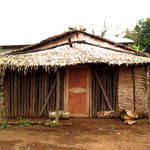
1 TRADITIONAL ENCLAVES: ARCHITECTURE AND URBANISM
The different ethnic groups that continue to coexist in the territory encourage the diversity of traditional enclaves associated with each culture. Today, they live on and are rooted in society as a reflection of the everyday life of the people, materializing in the conception both of specific spaces and of architecture typologies and construction techniques.
The papers will centre on traditional complexes throughout the country and may be about a building, a construction technique, a site, etc. It will be vital to include oral testimonies, which play such an important part in traditional cultures.
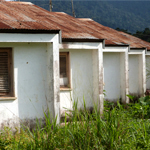
2 MESTIZO ARCHITECTURES
Equatoguinean heritage is characterized by a series of overlapping phases, marked by different ideologies and transcultural flows that have shaped the territory and the landscape over the years. The Symposium will reflect on the different influences that have made their mark on our heritage, including periods of occupation.
The papers will focus on analysis and description of the specific sites or buildings from different viewpoints and disciplines, encouraging interdisciplinary knowledge.
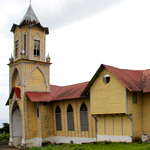
3 SACRED ARCHITECTURE
Sacred heritage is important throughout the territory. From small timber churches constructed by the community to major complexes such as seminaries, colleges and cathedral sites, it covers different scales, from the monumental to the domestic. It is as important to understand its implantation in the territory as to be familiar with the various buildings that make up the complexes, the construction techniques and the creation of typologies with clear influences on contemporary constructions.
The papers will focus on the different types of sacred enclaves, different uses and typologies, construction techniques, etc.
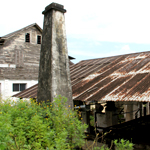
4 INDUSTRIAL ARCHITECTURE
All the complexes responding to the cultivation and processing of cocoa now form a valuable heritage body of industrial archaeology, with major potential for the future. Their functioning, and the description and analysis of the various complexes are one of the objectives of this theme. It also includes complexes associated with other activities such as large hydroelectric plants, coffee production, structures linked to logging and their impacts on the landscape.
The papers will address the characteristics of these complexes and proposals for their rehabilitation or restoration, with the aim of revitalizing the areas where they are located.
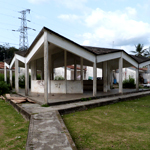
5 AFRICA AS A NATION: STRATEGIES FOR THE FUTURE
In recent years, Equatorial Guinea has carried out major investment in infrastructures and the service construction sector. At the same time, in various African countries, investment in built heritage and improving the living conditions of its inhabitants should also be presented and analysed.
The papers will focus on contemporary interventions in Equatorial Guinea and in Africa, thereby promoting an overall reading of heritage as a basic pillar for sustainable development to contribute to the revitalization of depressed areas and gradually help the local population to appropriate the complexes in question.
SPONSORS









